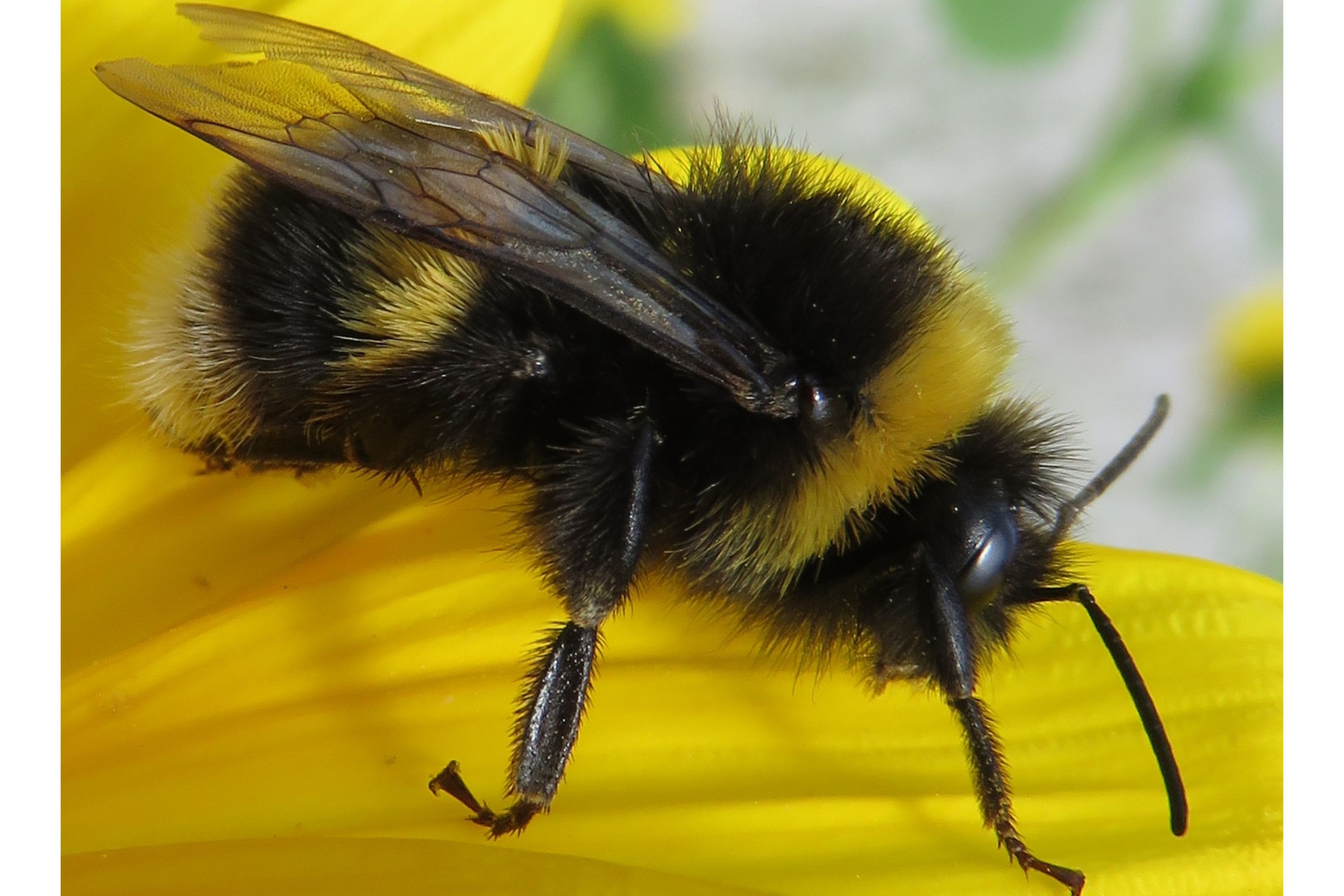Lemon cuckoo bumblebee
(Bombus citrinus)

Description
Bombus citrinus is a species of bumblebee known commonly as the lemon cuckoo bumblebee due to its lemon-yellow color. It is native to eastern North America. This is a cuckoo bumblebee, one that invades the colonies of other bumblebees, kills the resident queen, and takes control over the population of workers inside. Host bees for this species include the common eastern bumblebee (Bombus impatiens) and the half-black bumblebee (B. vagans). Before the queen invades a nest she forages on various plants, such as asters, thistles, snakeroots, blazing-stars, mountain-mints, and goldenrods. Bombus citrinus belongs to the parasitic Bombus subgenus Psithyrus. A previous classification had Psithyrus listed as its own genus, and so this species used to be identified as Psithyrus citrinus. Members of Psithyrus are distinguished from other Bombus based on an abdomen with thick tergites, a long stinger, enlarged mandibles, loss of corbiculae, no worker castes, and a reduction in wax glands and its production; all of these features are associated with being inquiline parasites that replace host queens. Of the other species within this subgenera it is most closely related to Bombus insularis and Bombus variabilis and has sometimes been subgrouped with these as Laboriopsithyrus or Citrinopsithyrus. Psithyrus diverged around 20 million years ago from a clade containing the subgenera of Megabombus, Senexibombus, and Diversobombus. Bombus citrinus is believed to have originated from this line around 2 million years ago in the Eastern Nearctic region. While they have developed specializations toward their specific host species, in a coevolutionary relationship, some of their modifications were likely to have remained broad enough to enable these Psithyrus species to diversify and disperse following a small range of hosts in their time and area. Bombus citrinus may have coevolved with its host species as they emerged within the same time frame and area; around 13 to 5 million years ago for Bombus vagans and around 2 million years ago for Bombus impatiens. Found in parts of the Northeastern area of North America. Their distribution includes eastern to central parts of Canada, Northeastern U.S states and parts of the mid-western and southeast regions of the U.S.
Taxonomic tree:







